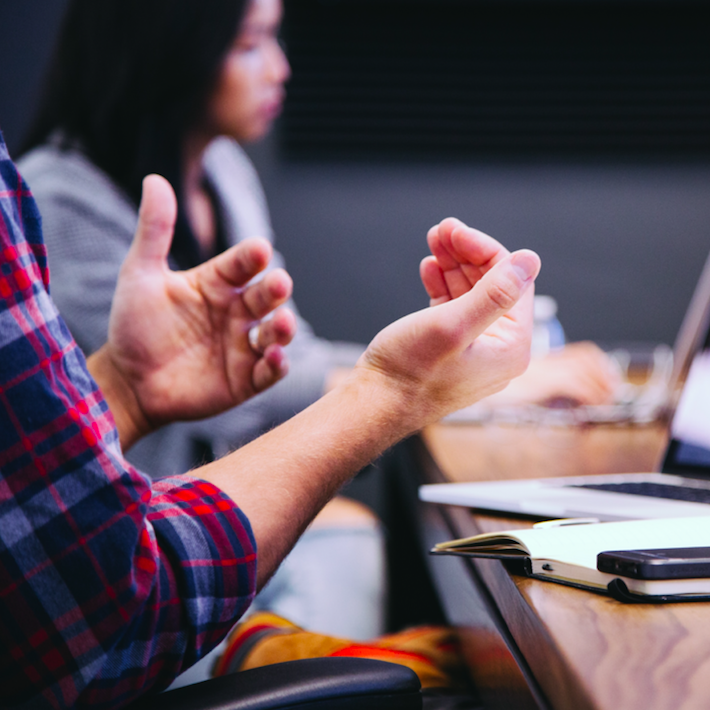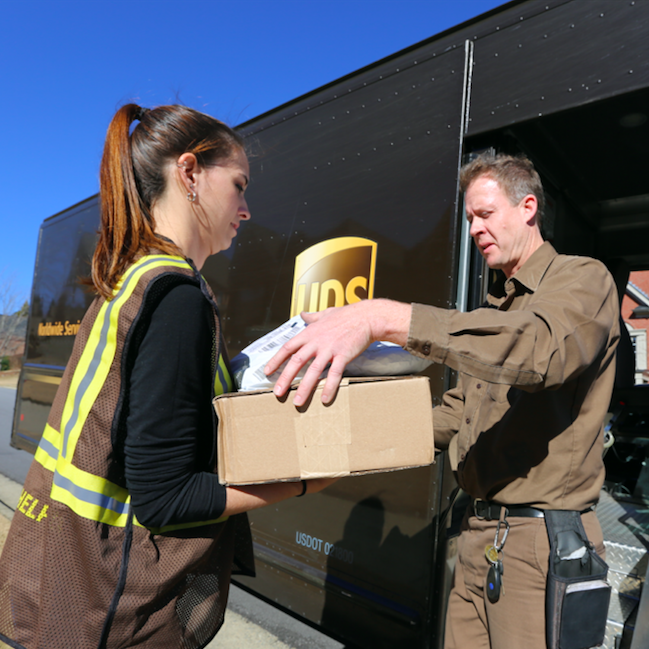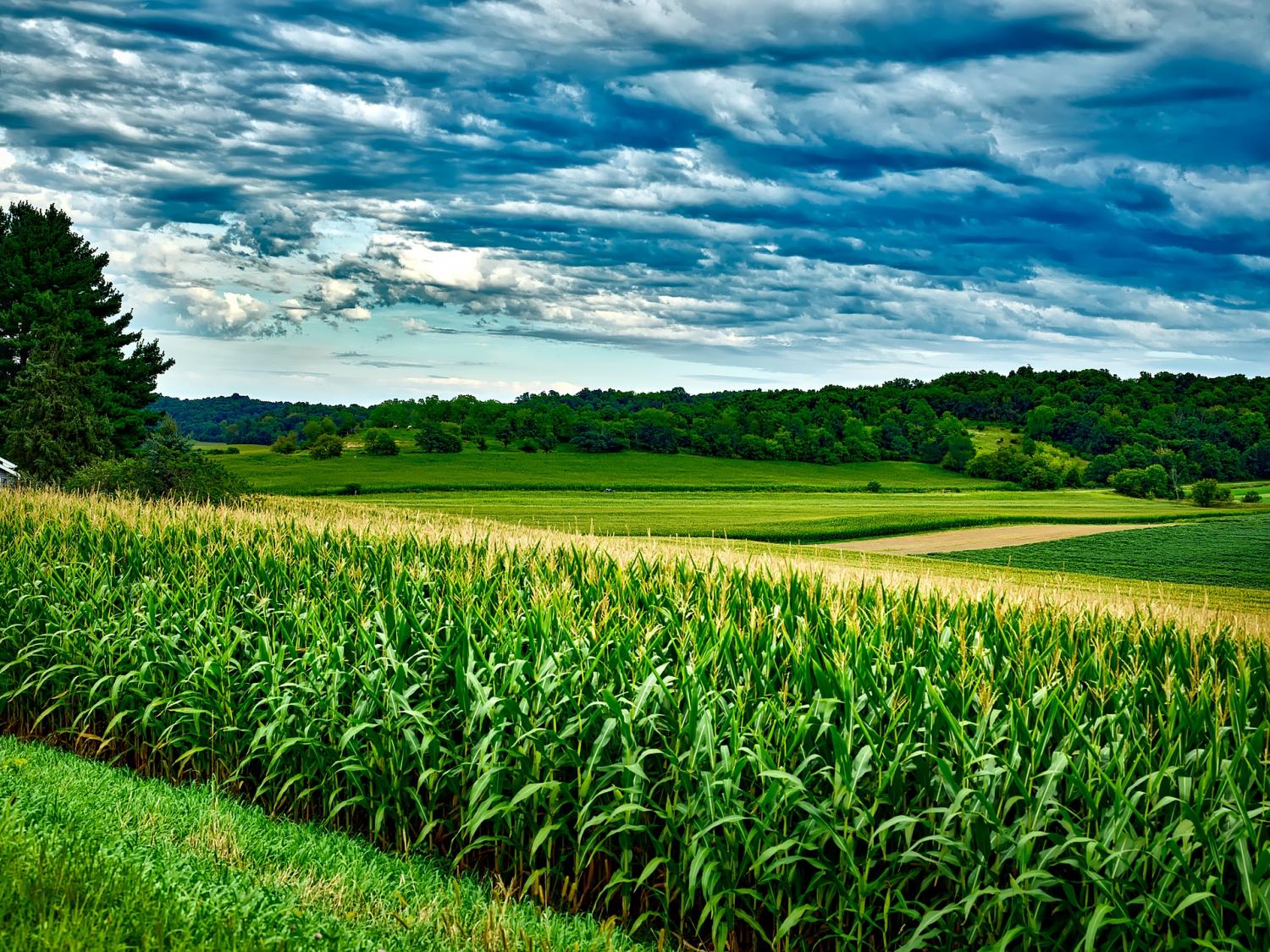Why We Have No Time for Climate Despair


Last month saw a massive global rising led by young people, demanding the grown-ups act urgently and ambitiously to save their future. At the same time, a deep climate despair is gripping a number of people who are awake to the crisis. Indeed, some are worried that it is now too late to stabilize the climate. The best we can do, they say, is build more resilient communities to withstand the coming climate-induced socio-economic breakdown. The novelist Jonathan Franzen recently made this case in The New Yorker.
“There may come a time, sooner than any of us likes to think, when the systems of industrial agriculture and global trade break down and homeless people outnumber people with homes.” He concludes that local farming and strong communities “will be essential in a crisis and in whatever society survives it.” (emphasis added)
Franzen speaks for a growing group worn down by the far-reaching damage we are doing to our world, who see climate change in apocalyptic terms, a phenomenon very likely to end human civilization as we know it.
This is precisely the wrong historical moment to abandon belief in a finer future. Climate solutions are now cheaper then fossil fuels, and getting cheaper. It lies within our grasp to rewire the world with clean energy. So why are some folks giving up?
It’s not too late to fight climate change
This new climate despair is being fed by two beliefs. The first is that the impacts of even 2 degrees Celsius will be so catastrophic that the civilization will not survive. This is just wrong. Two degrees will be bad, not the end of the world. The second fear is that we can’t cut emissions fast enough to stay below 2°C. Time is indeed short. By 2030, can we really get on the path to stabilizing the climate at the low end of warming?
Yes. In the past few years the path to deliver 2°C (or less) has been getting cheaper every day. Utility scale solar is already crushing fossil fuel across the world. In competitive energy bids in Colorado, Idaho, and California. solar plus wind plus storage bids are coming in at half the price of natural gas. Utility scale battery storage is already shuttering existing natural gas-powered plants. Very soon, distributed solar plus batteries will start to destroy the basic business model underlying the centralized grid.
The transformation is already underway
On the transport side, Mercedes Benz executives recently announced that they have designed the last gasoline-powered cars they will ever build. Add in driverless electric vehicles (EVs)—Lyft says that half its rides will be driverless within ten years-- and the disruptive market dynamics become even more powerful. Last month, Mad Money’s Jim Cramer—about as far from a sustainability advocate as you can get— wrote: “Oil's a goner. Natural gas is a goner. The oil complex is becoming un-investible before our very eyes.”
These transformative technologies are all arriving on the scene simultaneously, and just in time. They are here courtesy of decades of forward-thinking government RD&D spending in the U.S., Europe and China that drove down the cost of renewable energy and EV’s to a level now competitive with, and rapidly getting cheaper then fossil fuel options. Because it was only a few years ago that these technologies were indeed expensive alternatives, many observers have misjudged what it will take to stabilize the climate. Mainstream analysts like Cramer are just now getting it.
Running renewable price declines forwards means that by the mid 2020’s, the solar and the EV revolutions will be fully market driven. The policy challenge in energy and transport then is no longer top down, it is bottom up: tearing down obstacles at the state, city and utility level, and ensuring justice in the transition. Today we now have both the low cost technologies and successful business models to achieve the low-end Paris goal of 1.5 degrees Celsius.
To imagine how we might actually solve climate change by 2030, watch this video by Silicon Valley entrepreneur and Stanford Professor Tony Seba, or read my paper with Hunter Lovins, or the summary here. The basic argument is that solar plus storage plus driverless EV’s will be soon be so cheap that they will blow the existing energy and transportation infrastructure to bits. These renewable energy technologies could spread quickly across the earth in the next decade, as smart phones did in the last: from zero to 2.5 billion users, one-third of the world’s population, in 10 years.
Fighting to win and avoid the trip of climate despair
Solving climate by 2030 is possible. Of course, opposition from utilities and oil companies could delay the path to “solar dominance” to 20 years. Or 30. The timing, and how much global warming we get—low end or catastrophic-- depends critically on the level of political engagement by people like you and me with our states, cities and utilities. But regardless, the solar revolution is coming. Ask the CEO of Shell or the analysts at McKinsey. And if we fight hard enough for it, we can absolutely hold global heating to 2°C or less.
Despite this, you don’t have to scratch far below the surface to find an increasing number of grown-ups in climate despair, no longer able to see a way through to stabilizing the climate. But this fear is not grounded in what markets are telling us about climate solutions. Absorbing apocalyptic visions served up daily on our news feeds, it has become easier for many to imagine billions of people homeless and human civilization in ruins then it is a world rewired with clean energy.
By contrast, watch Greta Thunberg, the 16-year old talking truth to the powerful, and you can see the internal balancing of a warrior. Already bearing the pain of loss her generation faces, she is nevertheless telling us to fight for her future. This is no time for climate despair. Now more than ever we can see the path to solving climate change by 2030, and all that stands in our way is a lot of hard work.
Image credit: Matt Palmer/Unsplash
International Day of the Girl Reminder: We Need More Women Leading in the Sectors That Have the Biggest Impact on Us


Tomorrow, October 11th, marks the International Day of the Girl. The day serves to highlight issues that girls face worldwide while promoting girls’ empowerment. An important empowerment tool is representation – as in girls seeing women in a range of aspirational jobs.
In recent years there has been a significant increase in women holding management positions at utilities across the country. But to empower girls to pursue careers across the utility sectors, work still needs to be done to expand representation. Of the 27 women CEOs in the S&P 500, only three lead utilities (two energy, one water).
Representation matters for girls looking at options for future careers, but diversity is also good for the bottom line. Earlier this year, a report from the World Bank noted that globally, boards with greater numbers of women were more likely to outperform on profitability and value creation than less diverse boards. In the U.S., the report indicated that companies with diverse boards had a 95 percent higher return on equity.
The utility sector as a whole is assortment of privately- and public-owned entities, with investor-owned utilities more common in the electric sector. Most water utilities are publicly-owned in the U.S. Arguably, the municipally-owned utilities, both electric and water, are typically the least innovative due to a number of factors. Those reasons include budgetary and financing constraints, local regulations—some of which may be long-standing — and the reduced flexibility that comes with providing a public good.
These regulations and structures are necessary to safeguard public safety and to provide maximum accountability to the city or region that the utilities are accountable to. But there, too, evidence suggests that companies that put women in leadership positions experience greater innovation due to the increased diversity of the voices at the top. And as utilities struggle to reform their business practices in the face of increased clean energy and water scarcity, women in leadership may provide the jolt of innovation needed to power through to success.
Women CEOs of electric utilities, such as Paula Gold Williams of San Antonio’s CPS Energy and Connie Lau of Hawaiian Electric Industries, are overseeing their utilities’ goals to reach 50 percent renewable energy by 2040 and 100 percent by 2045, respectively.
HEI is a holding company that owns utilities that provides 95 percent of Hawaii’s electricity, and its largest company was named investor-owned utility of the year in 2018. Under the watch of Mary Powell, President and CEO of Green Mountain Power in Vermont, GMP set a goal of 100 percent renewable energy by 2030 (they are currently at 60 percent) and has become a leader in the transformation to new utility business model. GMP has been named one of the world’s most innovative company three years in a row by Fast Company.
Women leaders of water utilities, such as Trish Berge, General Manager of Sweetwater Authority in California and Carrie Lewis, General Manager of Portland Water District in Maine, are pioneering innovative ways to increase education in water and technology in their communities. For example, Sweetwater Authority has initiated a partnership between a hydro station and an elementary school to teach kids about career paths in water management. Susan Story, President and CEO of American Water Works Company in New Jersey and the largest publicly-traded utility in the U.S., has overseen the investment in research and development of smart water technologies and established an innovation development process.
Female role models are powerful for young girls. As a teenager, with dreams of being an astronaut, I revered the first classes of women astronauts like Sally Ride and Shannon Lucid. It pushed me into a career of science policy. Recently, as I prepared to testify before the Texas Legislature on an energy-water issue, my daughter asked me what my job was. I said I saved water. Her response: “Good job, Mommy.”
This year’s International Day of the Girl reminds us that the in the face of climate change, we need a diverse set of voices at the table to find solutions, and those role models at our essential utilities are empowering for the little girls finding their path.
Image credit: Kate Zerrenner
How This Lawyer Became a Force of Nature for Second-Chance Hiring


As many as one in three U.S. citizens has a criminal record – which means countless people will face a lifelong struggle finding meaningful employment. For many reasons, including historically low unemployment and growing fatigue with the U.S. criminal justice system, interest in second-chance hiring is growing.
Nevertheless, many businesses are still reluctant to hire the formerly incarcerated, despite the success of “ban the box” legislation (laws preventing employers from asking about one’s criminal history) across the country.
One organization that has shown leadership on this challenge is the Society for Human Resource Management (SHRM), which boasts over 300,000 members across 165 nations. In recent years, this organization, the world’s largest human resources membership association, has become a font of best practices, as well as myth-busting, on second-chance hiring.
As one owner of a staffing agency noted on SHRM’s blog earlier this year, “I have noticed that my best employees are the most unlikely and most overlooked: Those who lost the most.”
SHRM has found a proactive, resourceful and vocal ally in Koch Industries, which by most accounts employs 130,000 employees worldwide and has annual revenues of over $110 billion.
This story about second-chance hiring got its start in Queens
One of Koch Industries’ most passionate and committed advocates for second-chance hiring is Jenny Kim, Deputy General Counsel and Vice President of Public Policy at Koch.
Kim’s focus on second-chance hiring hearkens back to her upbringing in the Woodside neighborhood of Queens, New York City. “In my apartment building there were families not that different from us, but I think some of their sons probably had a hard time adjusting to the world that was constantly changing around them,” she said during a recent interview with TriplePundit.
The apartment building in which Kim’s family lived was one of mixed races and ethnicities, but in reflecting back to her childhood, she realized that in the end, all of the families had more similarities than differences. “Some of my peers ended up working at Bloomingdale’s or Macy’s. Others, well, their life took them in another direction – in the worst cases, sadly, Riker’s Island,” she recalled. “My parents are immigrants from South Korea, so they had a very sort of black and white view of the world. If you broke the law, you broke the law. That's it. So, they would say, we can't talk to them.”
But early on, Kim took a different view of her neighbors. “[My parents] would say, ‘Don't make eye contact with them,’ but I did anyway,” she said. “I realized my neighbors weren’t necessarily ‘bad’ people; after all, they sometimes helped my mom carry groceries to our apartment.”
Fast forward to years later, and Kim eventually graduated from New York University, and later, Boston College Law School. Those memories of her neighbors, however, stayed with her. “I think they were lost, and I think they had a lot of dreams and aspirations. But often they had no father figure in the home. Usually their moms were raising those young men by themselves,” she said.
From compliance to advocacy
Kim’s career eventually landed at Koch Industries, where at first, she worked on political law compliance. She then found herself on a project of figuring out how to structure and magnify the company’s criminal justice work.
The recollections of her neighbors stayed with Kim as this “project” ended up becoming a passion – one she articulated with relentless energy during her recent talk with 3p. “As you get immersed in this work, you start to peel back the layers of the onion,” she explained. “You get tired of reading about what's theoretically wrong with the system. You start meeting people. And that led to the first real meeting with a human being who had a criminal record that I got to know.”
Note that Kim described this man as a “human being” – one who told Kim that he could not go join his son on an upcoming school trip due to his criminal record. “That bothered me, because he clearly was trying to rebuild his life.”
To Kim, this human being, this father, deserved to be more than to be described as an “ex con” or other terms that are in our daily vernacular, largely formed by the media and popular culture. Kim didn’t see this person as someone who “did time,” but as a vibrant and talented human being. “I also remember how artistic and articulate he was; I can't even draw a straight line with a ruler,” she quipped.
The barriers to rebuilding lives
Kim explained how criminal records stay with people – along with at least other 46,000 additional penalties resulting from convictions that people will long confront as they try to become integrated once again within society. Those barriers are the result of what many estimates suggest are up to the 5,000 criminal statues and up to 300,000 criminal regulations that are on the books across the U.S.
Meanwhile, of the 2.2 million Americans who are in prison, more than nine out of 10 of them will eventually be released, or about 650,000 to 700,000 annually.
Kim’s drive, passion and learnings she gained by visiting prisons across the country helped lead to the partnership Koch Industries launched with SHRM earlier this year. The Getting Talent Back to Work initiative not only encourages companies and trade associations to embrace second-chance hiring, but offers them resources that can help them evaluate individuals who have the qualifications and talent – but also happen to have a criminal record.
Partnerships help push second-chance hiring forward
In addition to SHRM, Koch Industries partners with several organizations in its push to have second-chance hiring become the norm, not exception. In Wichita, home to the company’s headquarters, Koch partners with Rise Up for Youth, a high school mentoring program that works with teens by providing them the tools they need to manage life’s difficulties and eventually, succeed in adulthood.
According to Kim, employees help support this partnership by spending much time volunteering with the organization; many employees, executives and spouses have also been on Rise Up for Youth’s board. “What we’re doing is not just about financial support; it's also genuine community support,” added Kim.
Nationwide, Koch also works with organizations including Washington, D.C.-based Center for Advancing Opportunity, a research and education initiative that counts the Thurgood Marshall College Fund (TMCF) among its supporters. The focus of the center’s work includes supporting the research of scholars at Historically Black Colleges and Universities (HCBU) who specialize in education, entrepreneurship and criminal justice. “The TMCF-Koch partnership is a wonderful example of vision and impact working together to advance opportunity in the public and private sectors of life with HBCU scholars and students as important voices in this important endeavor,” said Gerard Robinson, the organization’s executive director.
Tomorrow, TriplePundit will feature Jenny Kim’s discussion of the business and moral case for second-chance hiring.
Don’t forget: Later this month, we’ll be hosting 3BL Forum: Brands Taking Stands – What's Next, October 29-30, at MGM National Harbor, just outside Washington, D.C. Jenny Kim of Koch Industries will be onstage the afternoon of the 29th as we discuss how the private sector can help support prison reform and the hiring of formerly incarcerated people.
We're pleased to offer 3p readers a 25 percent discount on attending the Forum. Please register by going to the 3BL Forum website and use this discount code when prompted: NEWS2019BRANDS.
Image credit: Koch Industries
Key to Ending Modern Slavery Lies in Frontline Communities, New Report Finds


The possibility that the shirt you are wearing or the smart phone you’re using was made by forced labor is not something most of us like to contemplate, yet it occurs more often than we likely expect.
In a report published by Hult Research and the Ethical Trading Initiative, 70 percent of companies say that slavery-related practices likely exist somewhere in their business operations or supply chains. The International Labor Organization puts the number of modern-day slavery victims at 40 million, the majority being women and girls.
To combat the problem, for more than 20 years, multinational companies from Adidas to Unilever have signed onto strong anti-forced labor statements and conducted risk-based audits and assessments of suppliers, many publishing the results. It seemed progress was being made.
But the London-based Freedom Fund now says that such corporate tactics are not working. They point to evidence from their frontline partners in forced labor hotspots such as India, Nepal and Thailand that suggests that ethical auditing and corporate certification schemes are ineffective tools for addressing and preventing forced labor in global supply chains. Instead, they say in a report published last month that a variety of community-based interventions and mobilization are key.
Working on the front lines to stamp out forced labor
The report -- “Unlocking What Works: How Community-Based Interventions Are Ending Bonded Labor in India” – looks at a five-year, $15 million intervention campaign supported by the Freedom Fund to protect workers in India.
The initiative included 40 nongovernmental organizations that conducted direct interventions to protect workers, including garment workers. Tactics included creating membership in community groups as alternative sources for loans; creation of adolescent girls’ and women’s financial self-help groups; community vigilance committees to bargain collectively with employers; development of internal complaint committees to serve as venues for workers to address grievances; and the availability of courses to inform workers of their rights and recourse under the law.
The report found that the campaign succeeded in reducing the percentage of families in bondage from 56 percent to 11 percent in the fund’s focus areas and that the interventions were effective at stopping labor abuses and changing the structural conditions that enable unfair labor practices.
“Taken together, these evaluations affirm that the power to end modern slavery lies in frontline communities themselves,” said Nick Grono, CEO of the Freedom Fund, in a press release announcing the report. “Our programs are having a direct impact in the communities our partners are working in, and they are successfully building on this community-level work to positively change wider policies and systems.”
Apple, Intel and other multinationals doing more to eradicate forced labor
For their part, many multinationals would likely agree with the report’s findings. In fact, many include the tactics cited by the Freedom Fund – such as the availability of grievance mechanisms and training on workers’ rights – in their supplier policies. But a number of companies are going further, beyond audits, to reduce the risk of forced labor within their supply chains.
In 2018, Apple received the Stop Slavery Award by the Thomson Reuters Foundation for its efforts to limit the risk of slavery in its supply chain and operations. The award came after Apple and other companies were criticized for failing to check sufficiently whether the materials used in its products were coming from ethical places.
In accepting the award, Apple said it is expanding its approach to ensure that its anti-slavery policies don't only extend to those suppliers who create Apple's products, but to their suppliers’ suppliers. As reported in The Independent last year, Apple is working with suppliers to ensure they abide by the company's "no passport withholding" policy, for instance, making sure that foreign contract employees are free from abuse even among those workers who don't actually create Apple products. The company has also announced that it will be working with an NGO to hire human trafficking victims to work in its stores.
Intel, which found evidence of forced labor in its supply chain in 2013, prohibits its suppliers from charging workers fees to obtain or keep employment, a common practice that often results in indentured servitude. If the practice is discovered, Intel requires the supplier to repay the recruitment fees in full. Since 2014, Intel says its suppliers have returned more than $14 million in fees to workers.
Adidas, another recipient of the Stop Slavery Award, uses technology to encourage workers in its supply chain to speak out about abuses.
No silver-bullet solution
“Whilst we have outsourced our production and manufacturing all over the world, we will not outsource our moral responsibility which is to do right by the 1.3 million workers who make our products,” said Aditi Wanchoo, senior manager of social and environmental affairs at Adidas, at the Thomson Reuters Foundation’s annual Trust Conference.
While approaches may differ, it is clear that it will take ongoing, coordinated, sector-wide approaches, involving nongovernmental organizations, the private sector and governments, to truly make progress.
Image credit: ILO Asia-Pacific/Flickr
Investors Driving Dramatic Shift in Corporate Sustainability Disclosures


Investors have made clear that they want good, solid data when it comes to sustainability performance and companies are increasingly giving investors what they want, according to a new white paper from Deloitte.
More than 80 percent of mainstream investors now rely upon sustainability or ESG (Environmental, Social, Governance) disclosures to make decisions. In 2011, 20 percent of the S&P 500 companies published some form of a sustainability disclosure; that figure surged to 86 percent in 2018, according to Deloitte.
“We've definitely seen a dramatic shift in corporate disclosure in the whole ESG, non-financial sustainability disclosure space,” Kristen B. Sullivan, a partner of Deloitte and one of the authors of the paper, told TriplePundit in a recent interview. “It’s very much a reflection of the way companies want to provide their stakeholders, investors in particular, with more insight into how the company is navigating shifting environmental and societal trends, impacts, risks and opportunities.”
Deloitte also noted a shift in how ESG disclosures are provided. More companies are presenting or referring to nonfinancial measures in financial filings, and they are getting those disclosures assured by a third-party provider. Almost 40 percent of S&P 500 companies voluntarily address some aspect of sustainability in financial filings. Some 36 percent of those companies are getting partial external assurance, although the number who have their sustainability reporting fully assured remains low at 3 percent.
“External assurance is definitely on the rise,” Sullivan says. “Investors want confidence that the information is complete and accurate and reliable and that ESG is truly integrated into corporate practices and how companies are making decisions.”
Millennials also driving the transparency train
Customers and employees are also driving the appetite for more sustainability disclosure, in particular, millennials and Generation Z, a trend 3p has reported on extensively. According to Deloitte’s 2019 Millennial Survey, these consumers are values-driven in the choices they make, with 42 percent they have begun or deepened a business relationship because they perceived a company’s products or services to have a positive impact on society or the environment.
“No matter where you play in the capital markets, confidence and trust is foundational,” Sullivan noted. “Transparency is really a tool to drive trust and confidence with stakeholders. The discipline of disclosure helps management more effectively manage their activities as they think about these risks and opportunities and how it integrates into their business strategy and make better informed and make better decisions as well.”
Risky business to hide information
Sullivan issues a warning as well: companies that are not transparent about their sustainability performance could lose favor with investors or lose their competitive advantage, and have more difficulty attracting and retaining customers and employees.
“Even just a few years ago there was a perception that the risk of voluntarily providing sustainability information to the market outweighed the benefit, but I think we’ve seen that shift and the absence of disclosure is increasingly outpacing any sort of a concern about voluntary disclosure risk,” Sullivan said.
“They’re really leaving value on the table because the traders and analysts who are providing an ESG evaluation to the marketplace are doing so very transparently,” she adds. “If you’re not telling your story, someone else is. The absence of meaningful, high quality, reliable disclosure really puts a company at risk.”
You can run but you can’t hide, as a growing number of investors use proxy voting and shareholder proposals to push their ESG objectives, as 3p has discussed. The 2019 proxy season was the third consecutive year in which environmental and social-related proposals accounted for the majority of shareholder proposals.
“Without disclosure, there's a perception of hidden risks and that's when investors are going to use that lever of shareholder proposals,” Sullivan said.
Image credit: Unsplash
UPS Continues to Invest in Energy Efficient, Lower-Carbon Fleets

This time next year, when the brown UPS truck pulls up in front of your home to deliver your just-in-time hiking boots or wine-of-the-month-club shipment it may be powered by natural gas. The Atlanta-based global logistics company announced today a $450 million commitment to purchase more than 6,000 natural gas-powered trucks between 2020 and 2022.
The announcement is the latest effort in UPS’s ongoing strategy to be the industry leader in building a more sustainable fleet of delivery vehicles and to reduce the absolute greenhouse gas (GHG) emissions of its global ground operations by 12 percent by 2025. And by global, we’re talking global -- 123,000 vehicles in more than 220 countries that deliver packages to 10.6 million customers every day.
To reach its goal, the company pledges by next year that a quarter of all the ground vehicles it purchases will be alternative-fueled or advanced-technology vehicles – with today’s announcement getting it one big step closer. And, by 2025, it expects that 40 percent of all ground fuel it uses in its fleet will come from sources other than conventional fuels.
More deliveries powered by renewable natural gas
The new natural gas-powered vehicles will be equipped with compressed natural gas (CNG) fuel systems provided under an exclusive agreement with Agility Fuel Solutions, a business of Hexagon Composites. Since 2016, Agility Fuel Solutions has provided natural gas fuel storage and delivery systems to more than 1,700 UPS trucks.
As part of the new agreement, Agility will provide complete end-to-end natural gas systems for heavy-duty gas trucks, terminal tractors and medium-duty walk-in vans, which are UPS’s familiar brown delivery trucks. These will include on-board CNG fuel storage and management and Agility’s certified natural gas engine fuel systems.
Vehicles equipped with CNG fuel systems can interchangeably use renewable natural gas (RNG) and conventional natural gas. Produced from landfills, dairy farms and other bio sources, RNG yields up to a 90 percent reduction in lifecycle GHG emissions compared to conventional diesel. As of October 2019, UPS has agreed to purchase 230 million-gallon equivalents of RNG over the next seven years, making the company the largest consumer of RNG in the transportation industry.
“Building CNG truck capacity is vital to increasing our use of RNG and ultimately meeting our 2025 sustainability goals,” said Juan Perez, chief information and engineering officer at UPS, in today’s announcement.
Together with TruStar Energy, the company has designed, manufactured and installed five new CNG fueling stations in California, Texas and Ohio. By the end of 2019, UPS says it will be operating 61 natural gas fueling stations across the U.S., Canada, and the United Kingdom.
A decade of investment
Over the past decade, UPS has invested more than $1 billion in alternative fuel and advanced technology vehicles and fueling stations.
As previously reported in TriplePundit, the company is also investing in zero-emission hydrogen fuel cell delivery trucks, self-driving vehicles, e-bikes, liquefied natural gas vehicles and electric and electric hybrid vehicles. In Europe, the company is also testing smart-grid technology that it says can charge its entire fleet of electric vehicles simultaneously, something David Abney, UPS CEO and Chairman, calls “a groundbreaking move” in the company’s most recent sustainability report.
Through its "Rolling Laboratory," the company teams up with fuel suppliers and vehicle manufacturers, such as Tesla and Workhorse, to develop and test each new technology in real-world settings before scaling them up for wider adoption throughout its global fleet.
UPS is not alone
Other logistics companies are also investing in more energy efficient and lower-carbon solutions.
German-based DHL has set an outwardly ambitious target to reduce all logistics-related emissions to zero by the year 2050. This includes an effort to reduce local air pollution emissions by operating 70 percent of its own first- and last-mile services with clean pick-up and delivery solutions, such as bicycles and electric vehicles. Its 2050 target comes on the heels of its 2020 target of improving carbon efficiency by 30 percent over its 2007 baseline, which it reached four years early in 2016.
Back in the United States, Memphis-based FedEx has set a goal to increase FedEx Express vehicle fuel efficiency by 50 percent from a 2005 baseline by 2025. It is currently at 39.6 percent. Like UPS, it is committed to increasing its use of fuel-efficient vehicles. In 2018, the company reported that it added 445 electric vehicles to its global fleet, resulting in more than 2,554 electric vehicles in service by the end of the year, including forklifts, airport ground service equipment and delivery trucks.
By the end of 2019, FedEx expects to add 1,000 Chanje V8100 electric vehicles to its fleet in California; it says it will also add Tesla Semi electric tractors – which boast a driving range of 500 miles -- once available. To prepare, the company is now upgrading infrastructure in its facilities to allow for multiple vehicle charging simultaneously.
As the pace of e-commerce and express delivery services continue to grow, such news couldn’t come at a better time.
Image credit: UPS
Bacardi Takes Stands on Both Gainful Employment and the Environment


Bartenders have a unique window on the world. They absorb and reflect the hubbub of conversation that swirls around their workplace. They fill many roles, including those of cheerleader and social influencer. When brands build relationships with bartenders — or mixologists, in professional parlance — they have a unique opportunity to amplify their messages. That’s not as simple as it may seem, but the company Bacardi has launched a new youth training program that could help build public support for its environmental activities as well.
Bacardi launches new training program for young mixologists
Bacardi’s new initiative addresses the twin problems of youth unemployment and a worker shortage in the hospitality industry.
Announced last month, the company’s “Shake Your Future” program is aimed at recruiting young people into the hospitality industry through a bartending and mixology training program.
In an era when the “gig economy” is attracting workers into jobs with little or no career development opportunities, Shake Your Future offers placement in an industry that has traditionally offered pathways for working up the ladder.
Bacardi gave this program a trial run last year in France. Based on those results, the company plans to roll it out across Italy, France and Spain later this year, with the aim of making it available in 12 leading cities globally within three years.
From the doorstep to an open door
With a branch in the Paris suburb of Saint-Ouen, Bacardi launched the pilot project to help address a youth employment crisis occurring practically at its own office doorstep.
According to the company, youth unemployment in the European Union is at an all-time high of 15 percent. At the same time, though, skilled workers are in short supply for the hospitality industry.
In partnership with the European Bartender School, Shake Your Future offers a free 10-week training and work program, leading to internationally recognized certification.
Beyond instruction in mixing scores of different cocktails, the program includes rigorous instruction in bar management and other transferrable skills.
The program also offers a genuine chance at job placement, with leading bars and restaurants providing on-the-job experience for participants.
Amplifying environmental messages
Coincidentally or not, Bacardi’s focus on youth employment has come about during a key moment in history, when young people across the globe are flexing their power to influence policy on climate change and other environmental issues.
In the meantime, evidence is growing that millennials are attracted to companies that share their values — both as consumers and as employees, too.
In other words, a company’s ability to attract the up-and-coming generation of workers is becoming intertwined with its ability to engage the public on environmental issues.
As a spirits maker devoted to building relationships with young bartenders, that focus puts Bacardi in a good position to work with the hospitality industry to amplify messages on the environment.
Bacardi already has a head start with a focus on the issue of ocean plastic debris. The effort has included partnering with nonprofits on local beach cleanup projects.
Bacardi has also taken the cleanup campaign to the source. Last year it partnered with the innovative organization Lonely Whale on the #FutureDoesn’t Suck campaign, designed to raise awareness about ocean plastic. A key element of the campaign is to encourage consumers to stop using plastic straws.
As part of the campaign, earlier this year Bacardi promoted a slightly tongue-in-cheek initiative to lobby Unicode, the keeper of the emoji archives, to remove the straw from the popular cocktail glass and soda cup emojis.
In another imaginative iteration of the plastic straw campaign, last month Bacardi and Lonely teamed up to produce a limited-run vinyl record made with recycled plastic straws. The effort has enlisted more than 50 bars to help collect straws. The record will feature Make It Hot, a musical collaboration by the international artists Major Lazer and Anitta, as announced earlier this summer by Bacardi.
Engaging employees on the environment
Bacardi has also taken the ocean plastic campaign into the arena of employee engagement. In 2014 it launched the annual Good Spirited Awards, aimed at motivating individual employees, teams, and entire facilities to develop new environmental programs including energy and water as well as waste and recycling. This year, the winning programs included amplification of the plastic straw campaign.
Another employee-centered initiative involves the company’s “Back to the Bar” event. Bacardi staged its second annual Back to the Bar event last February, sending more than 7,000 Bacardi employees to more than 1,000 bars in 130 cities around the world.
The event is aimed at peppering social media with Instagram messages. In just its second year, it has become an “important cultural touchstone” for Bacardi.
In a press statement last February, CEO Mahesh Madhavan explained that “…it’s important to reconnect with our roots, think like Founders and put our own feet on the street to see first-hand how our business, bars and consumers are changing.”
This ability to enlist employees in supporting brand identity and amplifying environmental messaging presents an interesting contrast with the efficiency-and-availability focus of gig employment.
That is reflected in the behavior of investors who are working to establish ESG (environmental, social and governance) profiles. Specifically, they are avoiding Uber and Lyft. In addition to a plethora of worker rights issues, evidence is beginning to show that ride-sharing services can increase car traffic and undercut public transportation, rather than helping to reduce local congestion and air pollution.
Impact on brand reputation
While Uber and Lyft (especially Uber) have struggled with their brand reputations in recent years, Bacardi’s emphasis on global youth, youth culture, bartender training, bar culture and employee engagement has been paying off. This year, Bacardi celebrated its seventh consecutive appearance on the Reputation Institute’s Global RepTrak 100 list, published in Forbes.
All things being equal, in the coming years Bacardi, and companies like it, will intensify their efforts to connect with global cultural transitions on a granular level, especially regarding the rise of youth activism and environmental action.
For Bacardi, it comes down to recognizing that bartenders are “truly on the cutting edge of what’s new and next in our business.”
The company foresees a revival of interest in drinking cocktails, driven by millennials. If all goes according to plan, this new “golden age” for cocktail culture will also be an age without a place for plastic straws.
Image credit: Johann Trasch/Unsplash
How the Global Food Supply Transition Is Like the Energy Transition


Consumers are buying more organic food, and that is adding yet another element of complexity within the food industry. Food companies are responding to the growing demand for simpler, safer ingredients in their branded products. However, they are bumping up against conventional agricultural practices involving the use of pesticides and genetically modified organisms, or GMOs, within the global food supply.
In that respect, the food and agriculture industries are engaged in a transitional struggle, much like the global energy sector is battling through a period of change from high carbon to low carbon.
First ice cream, now coffee
Nestlé and Bayer (which completed its acquisition of Monsanto last year) illustrate how consumer demand is fomenting tension between food brands and the agriculture industry.
In 2016 Nestlé ramped up its efforts to simplify its ingredients and provide consumers with more non-GMO options, focusing particular attention on several flavors of its Dreyer’s Slow Churned brand.
Nestlé positioned the move as a “journey to evolve with consumer preferences and offer greater choice.”
The company continues to express confidence in the safety of genetically modified ingredients, but some industry observers had interpreted its emphasis on non-GMO options as a strike against Monsanto.
Last month the tension with Bayer came into sharper focus, when Nestlé went public with concerns over the level of glyphosate in coffee beans.
Glysophate is the key ingredient in Bayer’s popular Roundup brand herbicide, a legacy Monsanto product.
As reported by Bloomberg and other media, Nestlé tested its beans and found that glyphosate levels in certain beans from Indonesia and Brazil are uncomfortably close to the limits imposed in Europe, Australia and Malaysia. Those limits are stricter than in other nations across the world.
Nestlé has stated that its agronomists will work with the source countries to adjust the protocols for applying glyphosate and other herbicides, including the “adoption of other weeding methods,” in order to meet the stricter standards.
Global food supply, global standards
Nestlé’s reference to “other weeding methods” is consistent with the company’s broader supply chain requirements for water resources.
Published in 2012, the requirements state that “farmers should adopt measures to reduce pesticide use, such as integrated pest management, and/or the use of cultural, biological, mechanical or physical methods.”
Reducing, if not eliminating, the use of pesticides and herbicides would be a task for global food companies like Nestlé – not necessarily suppliers like Bayer.
For example, back in 2008 Nestlé preemptively withdrew a Brazilian milk cereal product from the U.S. market. It took the action because the U.S. had not yet set a limit for a certain pesticide used on wheat, though the cereal did meet standards set by Brazil and the EU.
Food and energy transitions
As major economic sectors, food manufacturing and agriculture are both deeply entwined in the global energy transition, especially as it relates to the nexus between energy and water.
As with the demand for clean power, demographic and cultural forces also appear to be at work in the global food supply transition. Products that were once confined to the shelves of the local food co-op are now mainstreamed into thousands of big box supermarkets.
Last December, Nielsen surveyed trends in the U.S. and noted that millennials and citizens of Hispanic heritage topped the list of demographic groups driving a significant jump in the sales of organic products.
The report attributes millennial support for organics to an overall interest in sustainability. That element is also in play for the Hispanic demographic in the U.S., but the key factor is the use of traditional ingredients to prepare meals at home.
According to Nielsen, organic products are “more accessible than ever” and “sales continue to outpace previous years.”
Nielsen found that “growth is huge” in the organic FMCG (fast moving consumer goods) industry, even though overall consumption in that category has practically flatlined:
“Where the average American household is spending just 0.2% more across overall FMCG, the pace of purchasing happening among organic goods is exceptional and is breathing life into otherwise flat or contracting aisles of the store.”
Food and energy
Bolstering Nestlé’s emphasis on supply chain requirements, the report indicates that overall, consumers are becoming more sophisticated about both their food and non-food supermarket purchases.
They are “taking note of the ingredients, manufacturing process, and attributes” surrounding the items in their shopping cart.
That close scrutiny is in accord with the efforts of Nestlé and other food brands to reduce their carbon footprint, including impacts within the supply chain.
Along with using renewables at its factories, Nestlé is working with farmers to reduce greenhouse gases, particularly in the dairy supply chain. Tree planting and biodiversity efforts are also part of the mix.
The company also plans to accelerate “the transformation of its products in line with consumer trends and choices.”
Like the energy transition, the global food supply transition is well under way, and leading brands will continue to press for more sustainable — and marketable — agricultural practices.
Image credit: David Mark/Pixabay
Reaching Kids Early Is the Key to Driving Interest in STEM, Educators Say


(Image: Students at Aviation High School, the largest public aeronautical high school in the U.S.)
Most of us know that jobs in science, technology, engineering and mathematics (STEM) fields are in high demand: Economic projections indicate a need for up to 1 million more STEM workers than the U.S. will have available in its workforce through 2022.
Introducing children to these subjects at an early age can help to close the so-called “STEM gap” while opening up a college education and well-paying jobs to more young people nationwide, educators and researchers say.
“It’s important for youngsters to start at the elementary-school level,” Mario Cotumaccio, assistant principal of Aviation High School in Long Island City, New York, said of STEM education. “The sooner it is incorporated into the curriculum, the better, as early as pre-kindergarten and kindergarten.”
Aviation High School has prepared young New Yorkers for technical careers in the aerospace industry for more than 80 years. Within specialized fields such as aviation in particular, “Exposure is the biggest factor, especially for inner-city kids, who rarely see what an aviation technician or aviation mechanic does,” Cotumaccio told us. “It’s about having them feel different career clusters and do career shadowing at an early age.”
The school works with professionals and companies in the aviation industry to connect students with mentors and provide hands-on learning opportunities. With an office a mere mile from the school’s campus in Long Island City, JetBlue and its aviation and STEM-focused Foundation are key mentoring partners. Hundreds of JetBlue crewmembers are alumni of Aviation High School, and now they’re paying it forward by regularly volunteering as student mentors and sponsoring field trips to New York airports.
Although students work on planes in class, many have never stepped foot on one or been inside an airport. Working side-by-side with crewmembers also gives students a glimpse into the day-to-day life of aviation professionals and allows them to see themselves in the career, as some say the field trips are the first time they’ve seen pilots of color. These trips also provide awareness of the many career options available within an airline, according to JetBlue.
“One third of U.S. companies report job openings and can’t find skilled workers for technical positions. A strong STEM foundation will be critical as these students enter the workforce,” said Marco Nogueira, director of quality assurance and chief inspector of technical operations for JetBlue.
“Mentorship and access are the key differentiators that help the JetBlue Foundation make a true impact, whether it’s ensuring students have skills for well-paying STEM jobs upon graduation from high school or the opportunity to further their education through college,” he continued. “As the JetBlue Foundation Ambassador to Aviation High School, I have the honor of working with students and administrators to provide a direct pathway to JetBlue’s talent pipeline and workforce.”
Why STEM?
STEM programs are particularly important for students in high-poverty, urban school districts, research finds. Graduation rates remain much lower in these districts compared to the national average, as students grow discouraged by under-resourced schools and a lack of opportunities to attend college.
Focusing on specialty and vocational training has proven to help keep students, particularly those from underserved communities, engaged. And data indicates that reaching students at an early age determines if they enter STEM tracks at specialty and vocation-focused high schools.
According to research from the Association for Career and Technical Education (CTE)—a national association representing CTE professionals—students involved in CTE programs are more engaged in school and graduate at higher rates than their peers in traditional high-school programs. Students in CTE programs have an average graduation rate of 93 percent, and more than 75 percent of those graduates go on to postsecondary education not long after high school.
Technical schools prepare young learners for success
One of the country’s most successful technical high schools, Aviation High School has built its reputation on a demanding curriculum that has evolved with the industry, educating thousands of the city’s underserved students. It boasts the longest school day in New York City, from 7:30 a.m. to 4:30 p.m.
A Title 1 school, the enrollment is 42 percent Latino, 39 percent Asian, 12 percent white and 4 percent African-American. The female population is on the rise as well, Cotumaccio said, at close to 20 percent of enrollment, and the school provides support for female students. “We have shadowing, field trips, female mentors and we have female professionals come into the school and make the subjects very tangible for them.”
Aviation has a 90 percent graduation rate, and about 80 percent of graduates go on to college; many become pilots and enter engineering, law enforcement, business and aviation law.
The school’s proximity to John F. Kennedy International Airport also offers students the chance to train alongside aircraft mechanics and technicians. However, the majority come in having never touched a screwdriver. “They are quick on computers, but have difficulty using tools,” Cotumaccio said. “This is a replacement generation; it becomes difficult to impress upon them that things can be repaired.”
Most of the entering students have some type of love for aviation, he added, although they have not settled on a career. “Many are interested in piloting, creating, designing; we help them to work toward their goals.”
Driving interest in STEM: Opening the door for postsecondary education and successful careers
For those who want to pursue careers in aviation, the jobs will be waiting, Cotumaccio added. Together with Vaughn College, a four-year aeronautics and technology college in Queens, Aviation High School graduates more than 20 percent of the U.S. supply of new aviation maintenance technicians, a field that will need more than 100,000 new workers over the next 20 years in the U.S. alone.
“There is going to be a tremendous shortage Boeing is predicting in terms of aircraft technicians, pilots and teachers with these types of skills,” Cotumaccio said. “There are definitely opportunities for kids with aviation flowing through their blood.”
Aviation High School was one of the JetBlue Foundation’s first grant recipients. The two organizations continue to work closely together, and JetBlue’s Aviation High School internship and apprentice programs have provided hundreds of students with the opportunity to learn about the aircraft mechanic track, while working side-by-side with JetBlue technicians.
The JetBlue Foundation is accepting letters of interest for grants from STEM and aviation-focused partners for the Fall 2019 grant cycle through Oct. 12. Click here to learn more.
This article series is sponsored by JetBlue and produced by the TriplePundit editorial team.
Image credits: Aviation High School and Hanson Lu/Unsplash
How Workplace EV Charging and Electrified Corporate Fleets Can Become Even Cleaner


In mid-September 2019, Internet retail giant Amazon caught the world’s attention with the announcement of its order of 100,000 electric delivery vans, possibly the largest such electric vehicle (EV) order ever. It is the latest major milestone in EVs’ accelerating role as a core component of corporate sustainability. Amazon’s news follows on an early-2019 announcement from ride-hailing app Lyft to similarly add thousands of EVs to its fleet, all of them powered by 100 percent renewable energy.
Now, a recently released report from nonprofit software tech company WattTime shows how EVs can be even cleaner than they already are, further supercharging corporations’ decarbonization efforts. The key is emissions-optimized EV charging, powered by software intelligence.
The concept is simple, yet powerful: as the U.S. grid adds more renewable energy, the real-time emissions rate of the grid is becoming increasingly variable, with wind and/or solar supplying electricity in one moment and coal and/or natural gas ramping up the next. With the right software signal, smarter EV charging can sync with moments of cleaner energy and pause charging during moments of dirty energy. It’s like a “green” button for EV charging that further reduces associated grid emissions while still full charging the battery at the end of the charging period.
Workplace charging is growing fast, and a ripe scenario for emissions savings
Daytime workplace EV charging is one of the two most-common charging scenarios, alongside overnight at-home charging. It’s especially effective when paired with a regional grid mix well-matched to daytime charging, such as in California where lots of solar and some wind energy saturate the daytime hours.
The WattTime analysis found that emissions-optimized daytime workplace charging in a place like California could reduce associated EV emissions a further 12 percent annually and over 90 percent on individual days. These are additional, incremental emissions savings above and beyond the switch from internal combustion engine (ICE) vehicles to EVs charged on a variety of grid mixes.
The workplace EV charging market—as measured by both corporate EVSE expansion commitments and EVSE infrastructure deployment forecasts—is growing rapidly.
For example, The Climate Group’s EV100 initiative launched with 10 founding members in September 2017. The initiative brings together “forward-looking companies committed to accelerating the transition to EVs and making electric transport the new normal by 2030.” By fall 2018, that number had grown to 23 members; by September 2019, it has now grown to 59 members.
For another example, by many estimates there are upwards of 9,000 charging stations and a total of nearly 19,000 charging plugs at workplaces across the United States (filtering the U.S. Department of Energy’s electric vehicle charging station database by level 2, public, privately-owned stations). By 2030, the Edison Electric Institute forecasts a need for an incredible 1.2 million workplace level 2 charging stations to help accommodate the anticipated 19 million EVs on the country’s roads and highways by then.
5 ways smarter EV charging super-boosts corporate sustainability
At the end of the day, smarter, emissions-optimized EV charging helps make EVs even more cleaner. In turn, that supercharges corporate sustainability in at least five significant ways:
- Brand image: More than ever, translating corporate sustainability efforts into positive brand value comes down to authenticity and making true inroads to decarbonization. It’s behind the rise of “additionality” as the new metric for renewable energy procurement. Emissions-optimized charging provides a similar boost to the simple installation of workplace EV charging stations.
- Employee appeal: According to a 2017 federal study, employees who have access to workplace charging are six times more likely to purchase an EV than those who lack such access. Smarter, emissions-optimized charging “sweetens the deal,” boosting employee confidence that their EV purchase is indeed taking a bite out of overall emissions.
- Scope 3 emissions of employee commutes: Emissions associated with employees’ commutes typically fall under the Scope 3 category of the GHG Protocol for corporate sustainability reporting. Slashing those emissions starts with getting employees out of ICE vehicles and into EVs. Emissions-optimized charging takes those emissions reductions even further… without any upgrades to hardware, whether employees’ EVs or the workplace charging stations they use to refill their batteries.
- Fleet emissions: Whether massive fleets of delivery vans or platoons of corporate cars, electrification and emissions-optimized charging go hand-in-hand to make the biggest dent in fleet emissions.
- Renewable energy procurement: For corporations serious about integrating more wind and solar renewable energy on the grid, emissions-optimized EV charging can be a surprising yet powerful tool. As more and more variable renewables get added to the grid, we’re seeing increased instances of curtailment—times when perfectly good but surplus renewable energy generation gets “thrown away” because there isn’t enough demand to absorb it. Smarter charging knows when these moments occur, so that EVs’ batteries can soak up more of that clean energy and avoid charging during times of dirtier energy.
Everywhere we look, digitalization and software-enabled capabilities are at the heart of a new wave in corporate sustainability, from building energy management systems that optimize consumption to battery energy storage systems that mitigate demand charges to sophisticated power purchase agreements that match renewable energy procurement to actual corporate load profiles. As electric vehicles become an increasingly central part of corporations’ strategies, smarter, emissions-optimized EV charging should be at the heart of the discussion. Without it, integrating variable renewables while increasing EV load will simply not be possible, and we’ll all be leaving easy emissions savings on the table.
Image credit: Andrew Roberts/Unsplash